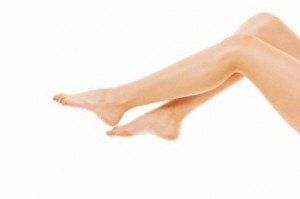 While during the summertime, opens shoes and skin exposed to the elements can make for cracked heels, winter and the colder months are the main causes behind the condition at the end of the year. Cracked heels occur when the skin loses its moisture, causing it to dry out and crack. To combat winter dryness be sure to keep a loofah in the shower to exfoliate the skin, always moisturize to keep the skin smooth, and consider wearing gel socks to keep your heels soft.
While during the summertime, opens shoes and skin exposed to the elements can make for cracked heels, winter and the colder months are the main causes behind the condition at the end of the year. Cracked heels occur when the skin loses its moisture, causing it to dry out and crack. To combat winter dryness be sure to keep a loofah in the shower to exfoliate the skin, always moisturize to keep the skin smooth, and consider wearing gel socks to keep your heels soft.
Cracked heels can become painful if left untreated. To learn more, consult with Dr. Jeff Wachtel, D.P.M., of Wachtel Family Foot Care. Dr. Wachtel will attend to all of your foot and ankle needs.
The Truth about Cracked Heels
Cracked Heels
Cracked heels are unappealing, and make it harder for you walk around in sandals. Not only may they look bad, but they can also tear stockings, socks, and wear out your shoes. There are several methods to help restore a cracked heel and prevent further damage.
How do you get them?
Dry skin is the number one culprit in creating cracked heels. Many athletes, walkers, joggers, and even swimmers suffer from cracked heels. Age and skin oil production play a role to getting cracked heels as well.
Promote Healing
Over the counter medicines can help, especially for those that need instant relief, or who suffer from chronic dry feet.
Wear Socks – wearing socks with medicated creams, helps lock in moisture so it can stay on longer.
Moisturizers – applying it both day and night will help alleviate dryness which causes cracking.
Pumice Stones – these remove dead skin, and then you can massage cream onto your foot. This way the cream will be absorbed. The skin needs to be exfoliated; therefore the outer layer dead skin needs removal.
If you have any questions, please contact our office located in Lansdale, PA. We offer the newest diagnostic and treatment technologies for all your foot ankle injuries.




